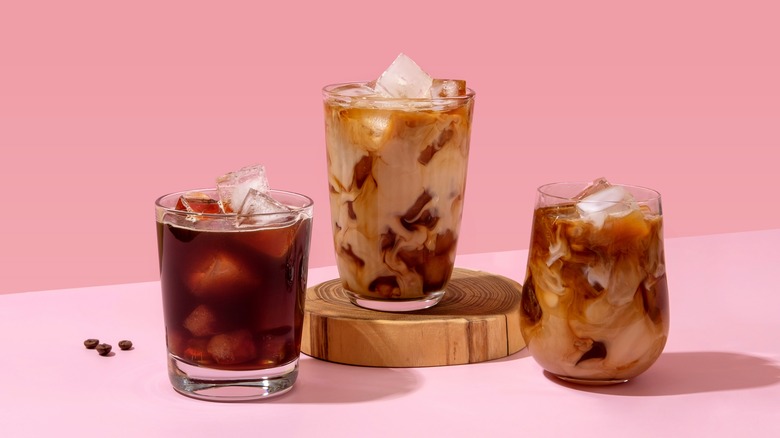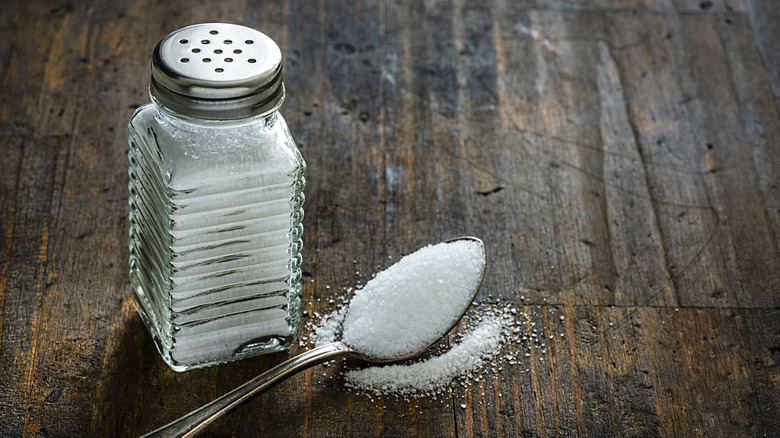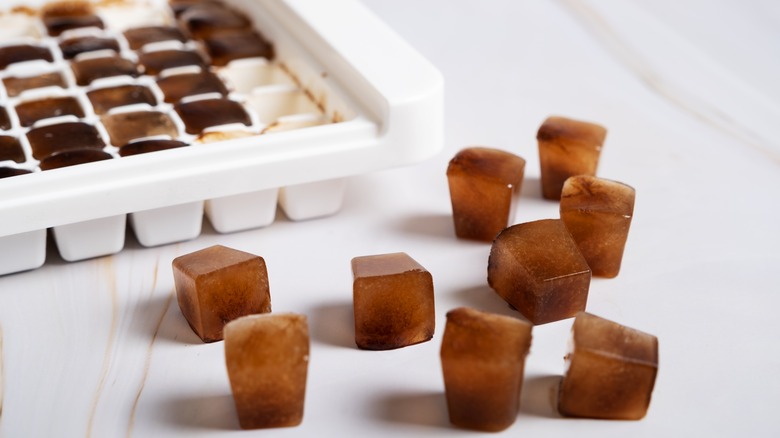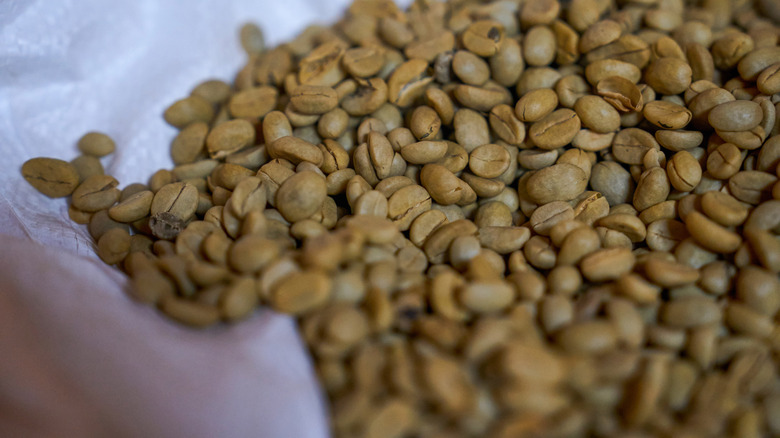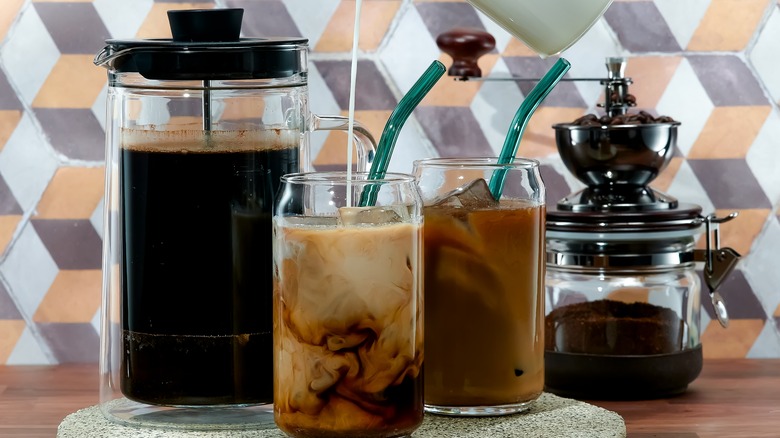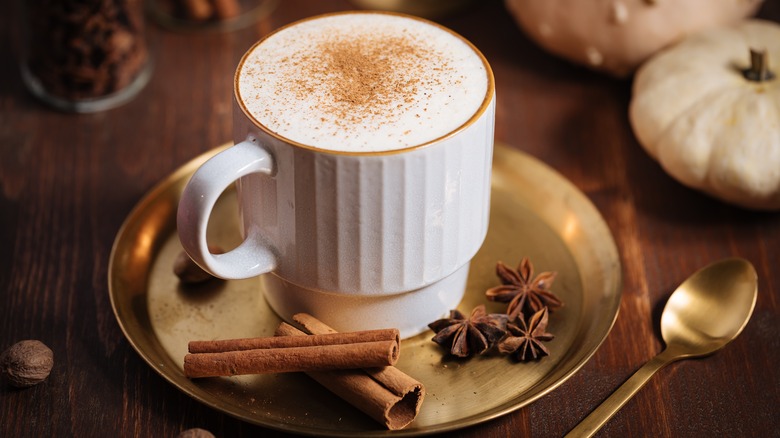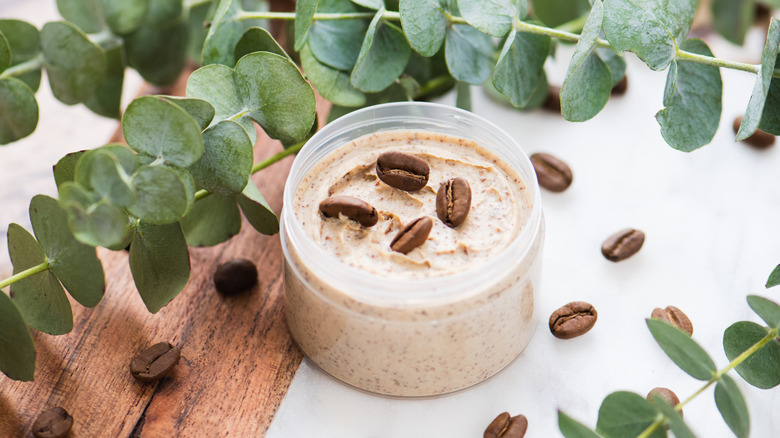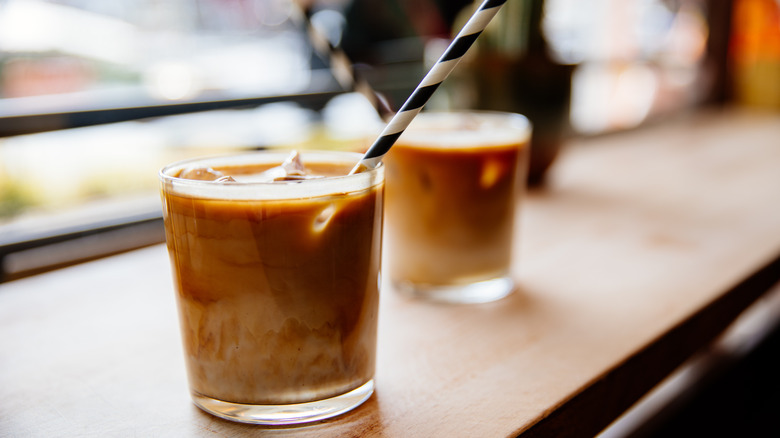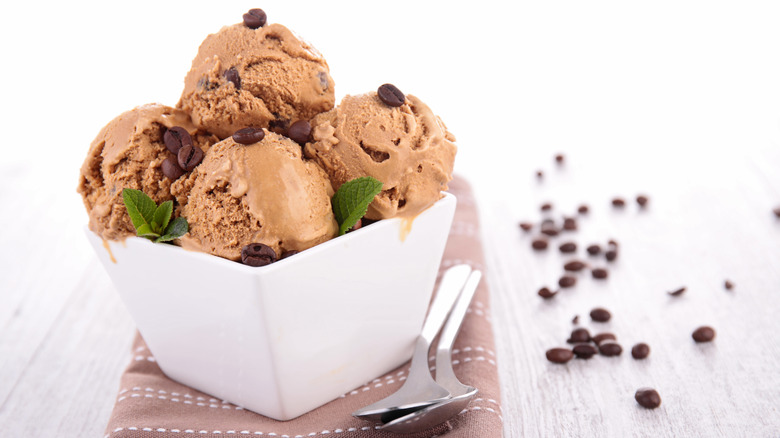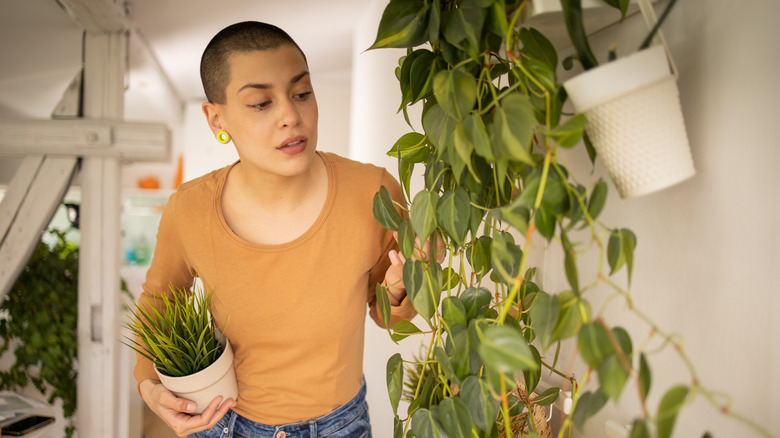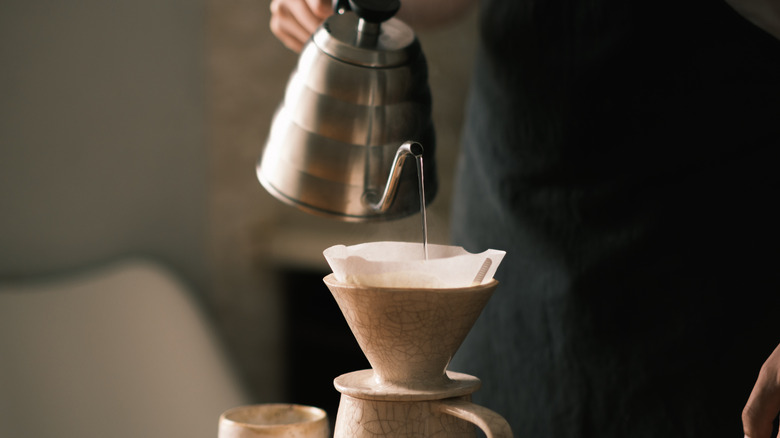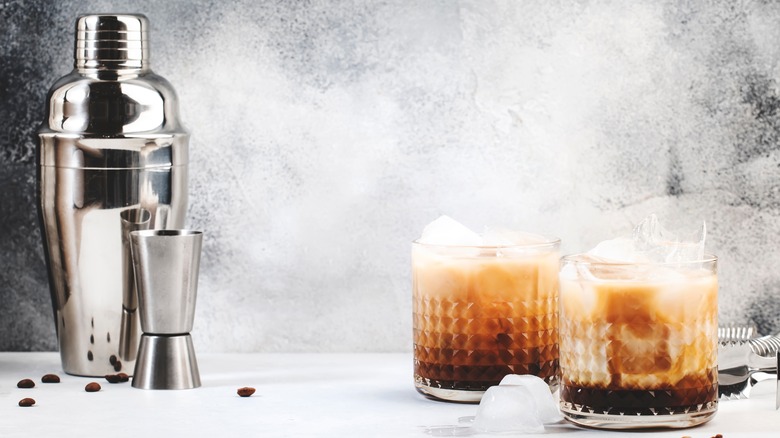13 Coffee Hacks You Need To Try
For countless folks around the world, coffee is more than just a beverage — it's a daily ritual, a source of comfort, and often, a means of kickstarting the day. If you're one of the many who can't imagine starting your morning without that cherished cup of Joe, or if you simply relish the idea of exploring new ways to enhance your coffee experience, you've come to the right place.
In this article, we will delve into the world of coffee hacks — those ingenious tips and tricks that coffee lovers have devised to take their brews to new heights. From simple tweaks to more advanced techniques, these 13 coffee hacks will infuse your daily routine with excitement. We've got a range of hacks for you, from simple tips to balance out bitterness to ways to add new flavors to your brew or make certain drinks without fancy equipment.
So, whether you're looking to impress your guests with a coffee masterpiece or simply want to savor a new dimension of coffee enjoyment on your own, these are 13 coffee hacks you need to try. Get ready to make your life easier or transform your standard daily brews into something special.
1. Add salt to your coffee to counteract bitterness
Adding salt to your coffee might sound counterintuitive, but it can actually help counteract bitterness and enhance the overall flavor profile of your brew. Bitterness in coffee is often a result of over-extraction during the brewing process. This can happen if the coffee grounds are too fine or if the brewing time is too long. Salt, being a taste enhancer, can help mask the bitterness by making your taste buds less sensitive to it. If your coffee has a bitter aftertaste, a pinch of salt can help reduce this lingering bitterness, making each sip more pleasant.
But salt doesn't just mask bitterness; it can also enhance other flavors present in the coffee. Just like in cooking, a small amount of salt can bring out the natural sweetness of the coffee, balancing the overall taste profile.
When adding salt to your coffee, it's crucial to start with just a tiny pinch in your finished brew. You can always add more if needed, but correcting an overly salty cup of coffee is difficult. It's also important to stir well to ensure the salt is properly dissolved. Alternatively, add a quarter of a teaspoon to 12 tablespoons of ground coffee before brewing.
You may need to experiment when adding salt to coffee. Everyone's taste buds are different, so the ideal amount of salt varies from person to person. Give it a try and see how it transforms your coffee experience.
2. Make coffee ice cubes for iced coffee
Iced coffee is undeniably awesome, especially on a warm day. However, the robust flavor can quickly turn watery as regular ice cubes melt, diluting your brew and turning it disappointingly weak. But here's a hack to avoid this issue — make coffee ice cubes.
The concept is beautifully simple. Instead of using regular ice cubes, which inevitably water down your iced coffee, you create coffee-infused ice cubes. These cubes, made by freezing brewed coffee, keep your drink refreshingly cold and maintain its strength and flavor until the very last drop. Making coffee ice cubes is as easy as brewing your favorite coffee and allowing it to cool to room temperature. Once cooled, pour the coffee into an ice cube tray and let it freeze until solid. The result is a tray of coffee-infused ice cubes ready to elevate your iced coffee experience.
Then, all you need to do is fill your glass with coffee ice cubes, top it up with as much milk or water as you like, and wait for it to melt a little before you start drinking. Whether you prefer a classic black iced coffee, a latte, or even an iced mocha, coffee ice cubes are versatile enough to do the job. Plus, they're incredibly easy to customize. You can experiment with different coffee blends, brew strengths, or even add a touch of sweetness or spice to the coffee before freezing.
3. Roast your own coffee at home in a popcorn maker
Roasting your own coffee beans at home might sound like a task reserved for the most dedicated coffee enthusiasts, but with the right equipment, it's easier than you might imagine. One unexpected tool that can be used for home coffee roasting is a popcorn maker.
Traditional popcorn makers, the hot air types specifically, serve as excellent makeshift coffee roasters. It only takes around five minutes, and you'll have turned fresh green coffee beans into roasted beans that you can use to brew coffee however you like it best. This process involves adding a small amount of beans to a standard hot air popcorn maker and monitoring them until they get toasty and roasted. It might not be a suitable way to roast large batches of coffee, but if you have a popcorn maker and are curious about roasting coffee, this is a great way to experiment.
Roasting your own coffee beans using a popcorn maker lets you customize your roast to your exact preference and allows you to experiment with different coffee flavors and profiles. It's a fun way to get to grips with the basics of coffee roasting and try something new.
4. Make cold brew in a French press
Cold brew has taken the coffee world by storm — and for good reason. This method produces smooth, less acidic, naturally sweet coffee. What makes cold brew so special is its preparation method, which involves steeping ground coffee in cold water for an extended period, usually between 12 and 24 hours.
But some cold brew recipes require Mason jars, strainers, and other equipment you might not have. Luckily, if you already own a French press, you can easily use it to make yourself some cold brew coffee. While traditionally used for brewing hot coffee, it also serves as an excellent vessel for cold brew preparation.
For cold brew, it's crucial to use coarsely ground coffee beans. This coarse grind prevents the coffee from becoming overly bitter during the extended steeping process. In your French press, combine coarsely ground coffee beans and cold water using a ratio of 1:6 (coffee to water) by weight. That's 21 ounces of water for every 3.5 ounces of coffee. Stir gently to ensure all the coffee grounds are saturated.
Cover the French press with plastic wrap or the lid (without pressing down the plunger) and place it in the refrigerator. Let it steep for about 12 to 24 hours, depending on your desired strength. After steeping, gently press down the French press plunger to separate the coffee grounds from the liquid, and you're done — easy!
5. Add spices to your ground coffee
While sweet syrups and flavored creamers have long been popular choices for adding variety to your daily cup, there's a natural alternative: spices. Adding spices to your ground coffee before brewing allows you to create tasty flavored coffee without the need for sweet syrups.
Common spices like cinnamon, cardamom, nutmeg, cloves, and even black pepper can infuse your coffee with complex flavors. Each spice lends its unique character, from the warmth of cinnamon to the complex aroma of cardamom, letting you have your coffee just how you like it. You'll get delicious flavor from the spices without sweetness, but you can still add sugar to your coffee.
To incorporate spices into your coffee, simply add the desired spices directly to your ground coffee before brewing. Start with around half a teaspoon for every six cups of coffee you intend to brew. You can experiment with different combinations, finding the perfect balance for your taste preferences.
The beauty of spiced coffee lies in its customizability. Want a festive touch? Add a hint of cloves and nutmeg. Craving something a little different? Experiment with cardamom and a touch of ground ginger. You can even create your signature blend, adjusting the spice quantities to match your mood and the season.
6. Use coffee grounds as an exfoliant
Your morning cup of coffee not only provides a caffeine boost but also leaves you with a handful of leftover coffee grounds. Instead of tossing them into the trash, consider giving those grounds a new lease on life. Coffee grounds, with their gritty texture and natural properties, make excellent exfoliants for your skin.
Coffee grounds have a coarse texture, making them ideal for exfoliating dead skin cells and unclogging pores. When used as a scrub, they help remove impurities, leaving your skin feeling refreshed and rejuvenated. By repurposing your coffee grounds as a skincare exfoliant, you're not only pampering your skin but also contributing to a more eco-friendly lifestyle. Reusing waste materials in your beauty routine reduces the overall environmental impact.
You can find a wide range of coffee ground exfoliant recipes online. From simple coffee grounds and coconut oil scrubs to more elaborate concoctions with added natural ingredients like honey, yogurt, or essential oils, there's a recipe for every skin type and concern.
When using coffee grounds as an exfoliant, remember to be gentle, especially if you have sensitive skin. Because coffee grounds are fairly coarse and rough, they're best used in body scrubs rather than as a facial exfoliant.
7. Froth your milk in a Mason jar
Creating a frothy, velvety milk foam at home without a fancy espresso machine or frother is entirely possible, and one of the most ingenious hacks involves using a simple Mason jar. This DIY approach to frothing milk allows you to enjoy lattes, flat whites, and other espresso-based beverages right in the comfort of your kitchen.
It's a super simple method that anyone can try. Start by pouring your desired amount of cold milk into a Mason jar. For best results, fill the jar no more than halfway to leave room for the milk to expand as it froths. Then, seal the Mason jar with its lid securely. Make sure it's tight to prevent any spills while shaking.
Next, shake the jar vigorously for about 20 to 30 seconds. This froths up the milk. Leaving it foamy and greater in volume. Assuming you want your coffee drink hot, microwave the jar for 30 to 45 seconds or heat the milk on the stovetop until it's steaming. Then, just pour the frothy milk over your brewed coffee or espresso. Since the milk isn't steamed, it won't taste quite the same as a coffee shop latte, but it's still frothy and delicious.
8. Make cold brew ice cream
An easy hack to make your own cold brew ice cream involves combining cold brew coffee with a creamy base. This recipe comes from katielarimore on TikTok, who uses a simple method and a creamy cashew base.
Start by soaking one cup of cashews in water for several hours or overnight. Drain the cashews and add them to a high-speed blender with one cup of cold brew coffee and 1/4 cup of maple syrup. Pour most of the mixture into ice cube trays, reserving 1/4 cup or so. Freeze the mixture in ice cube trays until solid. Then, you simply put the frozen cubes back in the blender with the reserved unfrozen mixture and blend until you have a soft serve style consistency.
And there you have delicious coffee ice cream with a cold brew kick with minimal effort and no ice cream maker required. If you're looking for a cold treat that's easy to make, this hack should definitely make its way into your kitchen.
9. Drink coffee before a nap
Drinking coffee before a nap might sound counterintuitive, as the stimulating effects of caffeine and the relaxing nature of a nap appear to be at odds. However, there is a scientific explanation for why this seemingly unusual combination can be beneficial. It's often referred to as a "coffee nap," and here's why it can work.
The first thing to understand is that when you consume caffeine, it takes some time to be absorbed into your bloodstream and reach its peak effectiveness. This process typically takes about 20 to 30 minutes.
Now think of all the naps you've woken up feeling groggy from. A nap of around 20 to 30 minutes is short enough to prevent you from entering a deep sleep cycle. During this short nap, you primarily stay in the lighter stages of sleep, avoiding the grogginess associated with waking up from deep sleep. These brief naps are often referred to as power naps and can help improve alertness, mood, and performance.
The magic of a coffee nap lies in the timing of caffeine absorption and the duration of a short nap. When you consume coffee just before a nap, the caffeine starts to kick in right around the time you should wake up from your nap. This means that you can potentially wake up feeling more alert and energized than you would if you'd just had a nap or coffee separately.
10. Fertilize your plants with used coffee grounds
Here's a hack to reduce waste from coffee and have your plants look their best. Fertilizing your plants with used coffee grounds is a sustainable and eco-friendly way to boost their growth and enhance their overall health. Coffee grounds are rich in nitrogen, which is an essential nutrient that plants need for healthy development.
Coffee grounds are considered green in composting, which means they are rich in nitrogen. Nitrogen is crucial for the growth of leaves and stems. When added to the soil, coffee grounds help balance the carbon-to-nitrogen ratio, promoting healthier plant growth. They also have potassium and phosphorus in them, both of which help fertilize plants.
After brewing your coffee, collect the used coffee grounds. Make sure to let them cool down and dry a bit to prevent mold growth. You can add them directly to the soil around plants, but be careful not to add too much. Alternatively, coffee grounds are a fantastic addition to your compost pile. When mixed with other organic materials, they contribute to the overall nutrient content of the compost, creating a nutrient-rich fertilizer for your plants.
11. Rinse your coffee filters before use
Here's a super simple hack for better-tasting coffee that you'll wish you'd known sooner — rinse your paper coffee filters before using them. But why should you rinse your coffee filters, and what difference does it make to your finished brew? We're fans of rinsing your paper filters by pouring over hot water from the kettle, but you can also dunk them in hot water to achieve a similar effect.
During manufacturing, paper filters might leave behind fine paper particles and dust. Rinsing the filter helps remove these residues, ensuring they don't end up in your brewed coffee. Consuming these particles can alter the taste and texture of your coffee, affecting the overall quality of your brew.
New paper filters often have a subtle papery taste. Rinsing the filter with hot water before brewing helps eliminate this taste, allowing the true flavors of your coffee to shine through. If you skip rinsing, your coffee might taste slightly off or less vibrant due to the residual paper flavor.
Wetting the paper filter before brewing helps it adhere to the dripper or coffee maker more smoothly. A wet filter conforms better to the shape of the brewing device, ensuring a better fit and optimal water flow. This, in turn, promotes even extraction of flavors from the coffee grounds, leading to a more balanced and flavorful cup of coffee.
12. Craft your own coffee syrups
There's nothing wrong with enjoying your coffee sweet and flavored, but commercial coffee syrups often miss the mark. They can be cloyingly sweet or have artificial notes to their flavors. If you want to make coffee that's truly special, you should make your own coffee syrups.
When you make syrups at home, you have control over the quality of ingredients used. You can choose organic, all-natural, and high-quality components, ensuring that your syrups are free from artificial colors, flavors, and preservatives.
Making your own coffee syrups allows you to customize the flavors according to your preferences. Whether you prefer classic vanilla, indulgent caramel, or more unusual flavors like lavender or cardamom, you can create unique syrups tailored to your taste. You won't find blackberry syrup at your local chain coffee shop, but you could certainly make one yourself. Not to mention that creating your own coffee syrups is a rewarding experience for anyone who likes to get creative in the kitchen. It can save you money, too.
13. Take your iced coffee shaken, not poured
There's a reason why mixologists shake cocktails, so if you have a cocktail shaker at home, you can use the same logic to make better iced coffee. Shaking iced coffee in a cocktail shaker chills it quickly and uniformly. The ice and the motion of shaking quickly lower the temperature of the coffee, resulting in a refreshing and cold beverage.
This method also allows for better control over dilution. The short duration of shaking minimizes the amount of melted ice, preventing the drink from becoming overly watery. Then, when you pour it back over ice, it won't dilute the ice as quickly because the liquid itself will be colder than an average iced coffee.
Shaking iced coffee also makes sure sweeteners dissolve properly and creates froth, which adds a creamy, luxurious texture to the drink. If you're using ingredients like cream, coconut milk, or condensed milk in your iced coffee, shaking them with the coffee in a cocktail shaker can emulsify the mixture for a better texture.
